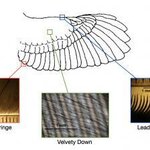Applied Physics

As I mentioned in my review of the Chem C3000, it’s sad that science kits usually can’t compete with more mainstream stuff like Guitar Hero. They also tend to be pricey, but the upside is that online and brick-and-mortar stores will carry chemistry sets, microscopes, etc. and since these things usually don’t sell well for the Christmas season, you can often find them after Christmas at a significantly reduced cost.
As you already know, I posted a review of the Thames&Kosmos Chem C3000 chemistry set here. If you are thinking about getting a telescope, Hank Campbell suggests the Celestron…

Arc discharges are common in welding and lightning storms but what about about in altered gravity conditions?
How often does that really come up? Not often, unless we ever send manned missions into space again, and it may be relevant in the design of ion thrusters used for spacecraft propulsion so let's do some science.
Jiří Šperka of Masaryk University in Czech Republic and Dutch colleagues studied the behavior of a special type of arc discharge, so-called glide arc, in varying hypergravity conditions, up to 18 G. In their paper, they demonstrate how the plasma channel of this glide arc…

The word 'synchronization' is part of our cultural lexicon - we 'sync up' with other people, 'sync our computers' and 'get in sync'.
There's a reason it resonates (we'll come back to our use of that word later) with us - synchronous behavior underlies many natural systems, events and phenomena.
Understanding conditions that cause oscillators, electronic components that produce a repetitive electronic signal, to get in sync or fall out of sync, is necessary to achieve the optimal functioning of oscillator networks that underlie many technologies. The transition from…

In a previous article I demonstrated how to build a conductivity tester out of Snap Circuits for your Science Play and Research kit.
You can use the same circuit with a small modification to build a simple magnetic stirrer. You can also further modify the circuit to make a reversible motor driver. Reversible motor drivers are often used in robotics to drive the robot forward or reverse, turn it right or left, to raise or lower a robotic arm, to open and close a robotic gripper, and so on.
You can use this circuit as an introduction to H-bridge ICs as well as an introduction to micro-…

Many owl species have developed specialized plumage to effectively eliminate the aerodynamic noise from their wings, allowing them to hunt and capture their prey in silence. And owls are vicious. Imagine the Go Pro footage you would get if you stuck one of those on an owl for the evening.
A research group working to solve the mystery of exactly how owls achieve this acoustic stealth presented their findings at the American Physical Society's (APS) Division of Fluid Dynamics meeting over the weekend in Pittsburgh and hope their work on "silent owl technology" will help the design of…

If you have ever wondered about why you can tap a newly opened beer bottle and its suds will foam out and go all over the place, researchers from Carlos III University and Universite Pierre et Marie Curie, Institut Jean le Rond d'Alembert have provided some insight - by exploring the phenomenon of cavitation.
Cavitation, a phenomenon relevant to such common engineering concerns as erosion of ship propellers, is the mechanism by which bubbles appear in a liquid such as beer after an impact, said Javier Rodriguez-Rodriguez, the lead researcher from Carlos III University.
After a sudden…

A normally fragile quantum state has been shown to survive at room temperature for a world record 39 minutes, overcoming a key barrier towards building ultrafast quantum computers.
In conventional computers data is stored as a string of 1s and 0s. In the experiment quantum bits of information, 'qubits', were put into a 'superposition' state in which they can be both 1s and 0 at the same time – enabling them to perform multiple calculations simultaneously.
In the experiment the team raised the temperature of a system, in which information is encoded in the nuclei of phosphorus atoms in…

Whistling kettles have been around for over a hundred years but science behind the mechanism of this siren sound, portent of delicious tea and cocoa (and heretical instant coffee) has never been fully described scientifically.
Ask an engineer or a physicist and you just get some hand-waving about the vibrations made by the build-up of steam escaping through two metal spout plates - everybody knows that, we whistle with our mouths too.
But if an offhand explanation is not good enough for you, engineers at the University of Cambridge in England have good news. Through a series of experiments,…

Patients may soon be able to get a bionic pick-me-up without undergoing the pain and lengthy recovery of surgery - an exoskeleton to support people who, through age or injury, are limited in their movement.
Engineers at the University of Cincinnati have designed and built a spring-assisted leg exoskeleton that can help people stand and sit.
Further research partnerships are examining how a brain-computer interface can interpret how to operate the exoskeleton with what the user wants to do.
Additionally, researchers are exploring muscle activity to produce a suit that will work in…

Anyone who has watched water exit a toilet bowl has learned something about fluid dynamics. But you can learn a thing or two by watching the pee that goes into it also.
Boring physicists apply the equations of fluid motion to boring thing like a flag in the wind or river currents, the American Physical Society Division of Fluid Dynamics (DFD) meeting in Pittsburgh will make things a little more practical for home research.
In the laboratory of Georgia Tech's David Hu, scientists and engineers look to nature for engineering ideas. In work that could help in the design of scalable…